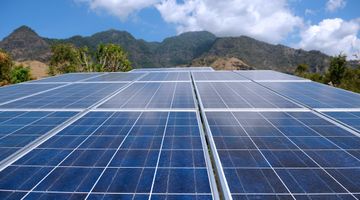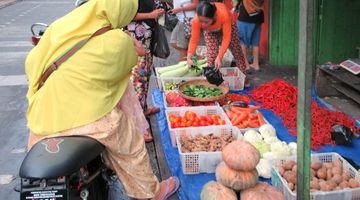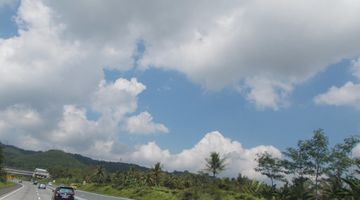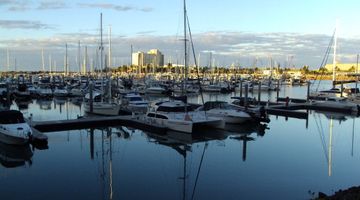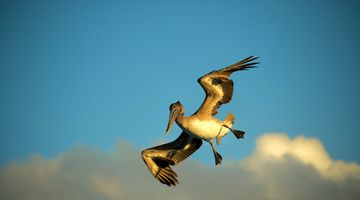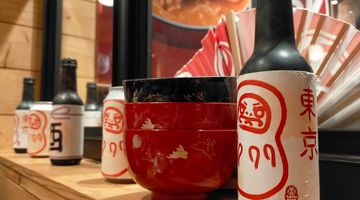Sulawesi Indonesia – Your Quick Travel Guide
in a nutshell
Sulawesi is an incredible concoction of lesser known islands, stretches of deserted beach, some of the best diving spots in the world, foods you’ve never thought of eaten, waterfalls you wish you knew about, and a bunch of places that are soon to be on your bucket list.
The most interesting places in Sulawesi
Sulawesi is packed full of an incredible amount of diversity. Stretched over a fair bit of land, the surrounds, cultures, attractions, animals, and the people it attracts vary more than you would have thought possible for a tropical destination.
The island is divided into several parts but is mostly easily understood as having northern, central and southern parts. Each part of the island is worth visiting for the spoils available only by going there. With paradise-like locations all over the island and its surrounds, there is no special spot that you should be running for as soon as you get off the plane.
The North
One of the biggest cities on the island is Manado, and it is definitely one of our favourites. The city is a vibrant, busy and moderately congested one. It is also full of character, the fascinating Minahasan people, incredible waterfalls, really incredible waterfalls, awesome viewpoints, long beaches, fantastic diving opportunities and some inventive and potentially disturbing food. Indeed, this is just the tip of the iceberg for the list of things that ought to keep you entertained with a big smile on your face in Manado. The tourist missing home will also find solace in the many malls, restaurants and western establishments here.
Worthy of its own short paragraph, the Bunaken marine park is famous the world over for the incredible diversity that exists beyond the azure layer that separates one world from another. The island and the surrounding 40 odd dive sites are but an hour away from the mainland city of Manado. Divers will have no doubt heard about this gem and should be wary of not spending the entirety of their holiday under the water as there is just so much else to see. However, we don’t think that anyone could hold it against you.
If you’re less interested in diving and are in search of the most deserted beach in Indonesia, then go ahead and make your way to the Sangihe islands. Being a solid 12 hours away from the northern tip of Sulawesi, only the most motivated will be up for the trip. Photographers, avid readers and those who want to be off the grid will find this to be to their liking.
Central Sulawesi
To the north of Ampana and Bunta in central Sulawesi are the Togean islands. The islands have some incredibly peaceful beaches that are much less visited by the postcard picture seeking tourists of foreign lands. The islands are a little difficult to get to, which ensures that the islands remain in their current state. The islands also boast some pretty great diving opportunities if you’re in the area and can’t make it through to the Bunaken Marine Park.
In the more central parts of the island lies the Lindu National Park. The park is ideal for nature lovers and those who really want to feel like they are off the grid. There are a bunch of beautiful plants, several species of monkeys and many interesting and exotic birds for you to admire and grab some snaps of.
If you are travelling from the north to the south of the island, Tentena makes for a good place to stop off and rest for a couple of days. If you visit in the month of August, then the annual Poso festival will be happening around Poso Lake – which is something that is not be missed.
Southern Sulawesi
The capital of the southern part of the island is Makassar. It is the major entrance way to the island. The city is developed and busy but has not lost some of its colonial heritage. Be sure to visit Fort Rotterdam for your fill of heritage. Spend the afternoon at Losari Beach because it’s wonderful.
Tana Toraja represents the greatest opportunity to learn about the culture of the Torajan indigenous group. The city has many ornate homes and loads of traditional architecture with festivals that seem to run year round. Be sure to learn about and witness the local people’s funeral processes and try and visit some of the burial sites. Some people are embalmed in living trees while others lie in coffins that hang off cliff edges. You can also get yourself a great cup of coffee. Yay.
The Wakotobi islands are an amalgamation of a few really special islands just off the south-eastern tip of Sulawesi. There are some incredible diving opportunities in the UNESCO marine reserve and a good deal of remote, white sand beaches.
When to go
Sulawesi has parts of it that is directly on the equator, and other parts that extend a fair way to the south. As such, the climate in the different parts of the province can vary quite a lot. In cities like Manado that are in the northern parts of the province, there is no prominent dry season. The rainy season is from November to June with the rain decreasing in the months between July and October. In the southern parts of the island, the dry season falls between the months of June and October. As such, to ensure that you have clear skies and can complete your Sulawesi itinerary umbrella free, your best time to visit would be between the months of July and October.
Where to stay on Sulawesi
Accommodation costs all over the country are low. While some towns and cities will have more backpackers than others, the going rate for a bed in a basic establishment won’t vary too significantly away from the norm. Some smaller places like Tana Toraja that are off the beaten track may not have backpackers but are sure to have a basic room for around 150,000 IDR. In these smaller towns you are also going to have a harder time coming across any boutique guesthouse or high-end villa – this is to be expected.
If you head to the more remote and exotic parts of Sulawesi and the surrounding islands, the options for a night’s stay begin to become a bit more expensive. The average low-end price heads closer to the 200,000 IDR mark. On the positive, they also begin to become a whole lot more impressive. If you're about ready to live that tropical life you’ve been dreaming of, these are the places you’ll be doing it. Outdoor bathrooms surrounded by verdant forest, private beaches, private villas, and private boats. Lots of private, lots of luxury.
Where and what to eat
On the diving islands like Wakatobi and Bukanen there is good supply of local and international cuisines, proving no trouble to you and your growling stomach. In other small towns and interesting spots over Sulawesi, you won’t find even a hint of a burger or pizza – not even something that looks like it. However, local cuisine is obviously always in good abundance.
The cuisines of the local people vary across the island while some dishes will remain a constant staple. Of course, being an island, there is a lot of seafood around. Yay for seafood.
Some of our favourite dishes from all over the island include Sup Lobster Kelapa, which is this incredibly flavourful seafood and butternut soup; Coto Makassar, which is the traditional dish of the southern parts and is almost a necessary part of your visit; and Sop Konro – rare tasty ribs done in a way that you have never experienced.
How to get around and between the various destinations on Sulawesi
If you aren’t able to spend a bit more than the minimum to get around the island, you are unfortunately going to have to take your chances with the laborious, stomach churning routes around the island via public transport. There are many stops and a few hair raising moments, and plenty of time to consider you and your place in the world.
For routes heading north of Makassar, both private and public busses depart at all times of the day from the Dayak Bus Terminal (Terminal Panaikang). If you’re heading south, you’ll need to leave from Terminal Mallengkeri.
If you can spare the change, you could always take a taxi from one destination to another. Reputable companies include Blue Bird and Trust Taxi. This will be, by far, a more expensive option than the public transport system.
Probably the best compromise between comfort and cost are the shared minibuses offered by private companies. They are called Kijang. These minibuses will take you between pretty much all of the cities and will need you to pay for just your seat rather than an entire vehicle for the privilege of air-conditioning. Of course, you could do this too, but definitely won’t be winning any awards for being a money saver. You can book your Kijang through many hotels and guesthouses and is best done at least a day in advance.
Lastly, easily the most fun option is renting your own scooter on a daily rate. This will allow you to take the scooter some great distances, but obviously won’t allow you to drop it off in a location other than the one you picked it up from. You should expect to pay around 60,000 IDR per day.
Mikrolet busses are one of your best bets for getting around the town or city that you’re in. They are blue, small minibuses that seat around nine people. Their destination is normally splayed across their windscreen which makes them very easy to use.
If you need to head across the various gulfs in Sulawesi, there is always the option of a ferry. However, as the inland transportation has improved, the ferries have become more unreliable with unpredictable departure times. Your best bet is to head to the wharf and get some information for yourself about your trip.
How to get to and from Sulawesi
By air
The two main gateways to Sulawesi are Manado in the north, and Makassar in the South. Both of the cities have international airports that have several daily flights from other islands in Indonesia and daily flights from surrounding countries like Singapore, Malaysia and Papua New Guinea. So, no problem at all really. Both airports are quite modern and surprisingly efficient for an island smack bang in the middle of the third-world.
By boat
Beyond flights your only other option is to arrive via ferry. Thankfully, Sulawesi has several ports at different points on the island that do a lot to cut down any other travelling you may have to do when you reach land to get to your final destination. There are very frequent trips made to and from Bali, Jakarta, the Maluku Islands, East Kalimantan, Northern Papua and Nusa Tenggara. Prices for these trips vary greatly. You can get accurate information from online sources with a bit of searching.
Is Sulawesi a safe place to visit?
Safety is of very little concern in Sulawesi. One’s biggest threat comes in the form of clouds of ash and spouts of lava from one of the many volcanoes. While this is quite the event and may seem to outweigh an incidence of pickpocketing, the likelihood of this happening is low. Very low. Like, don’t even worry about it low. Further, as Sulawesi is a fairly unvisited part of Indonesia, there are no tourist traps or any other such things that stand to ruin your day/trip.








